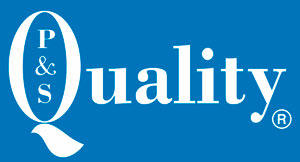2. credit Quality assessment: determining the credit quality of loans is crucial for energetic collection management. Financial institutions need to carefully evaluate borrowers’ creditworthiness, taking into account factors such as income, collateral, credit history, and the purpose of the loan. For instance, a bank might designate fico scores to financing according to the borrower’s risk profile. This helps no credit check loans Century in identifying high-risk loans that require closer monitoring and potential mitigation strategies.
3. Monitoring and Reporting: loan portfolio management involves continuous monitoring and reporting from key metrics to ensure the portfolio’s health and performance. Financial institutions use various tools and systems to track and analyze loan data, including loan origination, payment history, delinquency rates, and default rates. Regular reporting enables institutions to identify trends, assess the portfolio’s overall performance, and make informed decisions regarding risk mitigation or strategic adjustments.
Of the knowing the ins and outs from mortgage profile government, financial institutions can also be browse the difficulties out-of an energetic lending environment if you find yourself promoting profitability and you will reducing risk
4. Risk Management: Effective loan portfolio management requires robust risk management practices. Financial institutions need to identify, measure, and control the different types of risks associated with loans, such as credit risk, interest rate chance, liquidity risk, and operational risk. For example, establishing credit limits, setting suitable rates, and implementing risk mitigation methods like loan losings arrangements are essential to ensure the portfolio’s stability and profitability.
5. Regulatory Compliance: Financial institutions must adhere to regulatory requirements governing loan portfolios. These regulations aim to safeguard the interests of both the lending institution and the borrowerspliance includes maintaining adequate capital reserves, carrying out worry tests, and adhering to reporting standards. For instance, banks may be required to maintain a particular funding adequacy ratio and provide regular disclosures on their loan portfolio’s composition and performance.
Fundamentally, handling loan portfolios is a complex task you to need an alternative method, combining chance government, variation, credit assessment, keeping track of, and you will conformity.
Loan repayment metrics are measurements used to evaluate a borrower’s ability to make timely repayments. These metrics provide insights into the borrower’s financial situation, indicating the likelihood of loan default and the overall risk associated with lending. By analyzing these metrics, lenders can assess the creditworthiness of potential borrowers and make advised behavior of loan approval and terms.
step one. debt-to-Money ratio (DTI): It metric measures up a great borrower’s overall month-to-month obligations payments on the monthly money. It can help loan providers assess the borrower’s power to accept additional debt and then make timely money.
Example: Imagine if John keeps a monthly income out of $5,000 and you can pays $1,two hundred on the present debt obligations, in addition to auto loans and you may credit card costs
His DTI ratio could be 24% ($step 1,2 hundred / $5,000), showing that he has 76% out-of their monthly income offered to defense the mortgage money.
dos. Loan-to-Really worth Proportion (LTV): LTV ratio compares the borrowed funds total the brand new appraised value of the new security protecting the borrowed funds. It’s commonly used in mortgage credit to assess the risk out of credit from the property’s worth.
Example: Sarah would like to buy a home valued on $300,000 and enforce getting an interest rate of $250,000. Their LTV ratio might be % ($250,000 / $three hundred,000), and this suggests that the loan matter try % of your own property’s worth.
3. payment-to-Income ratio (PTI): PTI ratio tips brand new borrower’s function to meet loan payments based on their monthly income. It considers the loan payment as a percentage of the borrower’s gross monthly income.
Example: Mark produces $6,000 per month and you can would like to receive a personal bank loan that have a monthly payment away from $step one,000. His PTI proportion will be % ($1,000 / $6,000), demonstrating your financing commission makes up about % off their monthly money.
